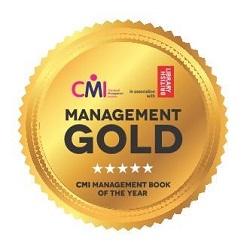The five-minute management idea: employees as stakeholders

What is the future for management and business? In recent years, many things have gone wrong with the conventional ways of organising and conducting business. And the problems persist: indeed, they have spread and become endemic.
Short-termism, insecure work, extreme disparities in rewards and life chances, ethical failures, dishonesty and manipulation, and periodic hollowing-out followed by corporate collapse and wider economic crises.
The system has, in many ways, become self-defeating and unstable even in its own terms. The single-minded pursuit of shareholder value courts a tolerance of malpractice that sets the scene for a race to the bottom.
At the heart of the system is the model of the modern corporation. In many ways, it now seems unfit for purpose in the context of the global economy. It is against this backcloth that the John Lewis Partnership case merits another close look as it offers a stakeholder rather than a purely shareholder focus.
It might be thought that the John Lewis model is already well-known: a popular, middle class retailer, offering quality goods and dedicated customer service from owner-partners. But, from our long engagement with the organisation, we conclude that the John Lewis phenomenon, while offering an alternative, is more complex than the standard depiction and it is characterised by its own challenges. These help explain why this successful alternative model has not been adopted more widely.
The Partnership is dedicated to the dual objectives of partner happiness and a successful business. Many insiders believe that the one drives the other. So, it is not a choice between ‘nicer or better’ but both - in a mutually reinforcing, way.
Long-term objectives
Research reported in our new book, A Better Way of Doing Business? Lessons from the John Lewis Partnership, published by Oxford University Press, reveals that the practice is not so straightforward.
We find that the model does not automatically deliver the goods. Indeed, there have been periods when the organisation was considered dated, dowdy and plagued by complacency.
The organisation is not answerable to the City and can thus pursue longer-term objectives. It can and does use its own assets to invest and also borrows for the same reasons. The strategic choices around allocation of resources between investment for the future, rewards to partners in the form of salaries and the annual bonus, the pension fund, and customer service, represent ongoing tensions.
The key to success is found in the skilful ongoing attention to managing these tensions. But the enabling platform is provided by the Articles of Association and the Constitution, the culture and the cultivated set of expectations which nudge directors into (mainly) doing the right thing.
Managing using the John Lewis business model can be both harder and easier than managing in other contexts.
It can be easier because the constituent elements of the model tend to be conducive to an organisational climate that is more positive and benign than in other, more assertive and single-minded corporations.
Yet it can also be harder, because of certain constraints and expectations: co-owned enterprises generally find it more difficult to raise finance; the attempt to establish secure employment may lead to a degree of complacency; members may need to be convinced of the wisdom of sacrificing current income in favour of investment for future growth; and managers are expected to consult widely and deeply and achieve not only conventional commercial objectives but additional ones such as working for wider stakeholder interests and not just narrow revenue and profit targets.
Because of these and other reasons, cooperatives in general may have a tendency to ‘degenerate’ – either pursuing commercial forms or conversely overly-focusing on cooperation to the neglect of commercial viability.
The lessons for would-be emulators is that the component elements are interconnected and there is a need to manage tensions and juggle competing priorities rather than seek to fully resolving them.
The art of impression-management
But, herein is the real challenge. Managing using this model depends on both real things and imaginary, fabulous aspects. That is, there are very real and important elements of the model (how partners are treated, elements of democracy, restraint on managers' pay etc.) but there is also an element of myth-making and impression-management.
The two factors are closely related. Impression management cannot succeed without some support from underpinning realities. Yet, these foundations on their own would probably not generate such positive impressions attitudes and commitment without considerable skilful managerial effort.
Partnership thus requires artful practice.
Under difficult market conditions, management's room for manoeuvre with respect to impression management is reduced. The magic dust may tarnish. What management should do is use the democratic structure and process to engage partners in genuine open debate.
But, paradoxically, a management which has spent a lot of time and energy quietly neutralising and managing the democratic processes may find these supports, when needed, no longer fit for purpose.
Graeme Salaman and John Storey are authors of A Better Way of Doing Business? Lessons from the John Lewis Partnership. It is published by Oxford University Press. This article originally appeared on the CMI Insights Blog in January 2018. Their book was nominated for Management Book of the Year 2017/2018 in the Management Futures category.
Upcoming Events
No events
